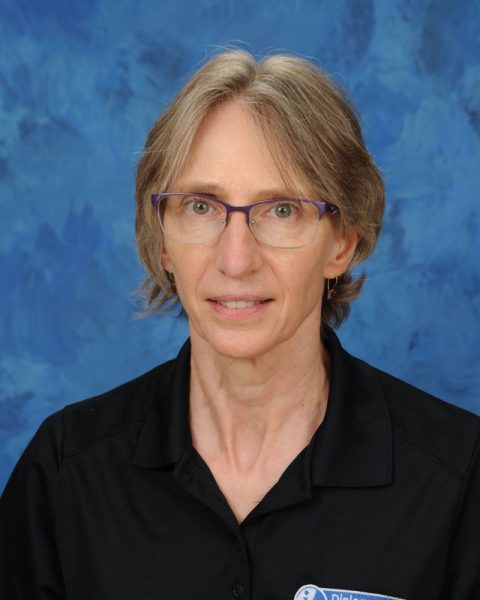The art of teaching
Teachers approach to learning values student creativity, experiences
It takes time for people to discover their passion through trial and error as they pursue different pathways. At times, individuals have to try over and over again before they find what is right for them. Art teacher, Garrett Hines experienced this throughout his college career as he searched for his passion and purpose. He now uses the lessons he learned to guide and help his students find their own passion and purpose.
“I knew I wanted to pursue a career in art when nothing else worked, I did a lot of different things before I got into education, but I’ve always made art,” Hines said. “I’ve been drawing since I was little bitty, and in college, I changed my majors seven or eight times. When none of those worked, I got out of college, worked in the real world for a little while, and went back to get my teaching degree so I could teach art.”
Aside from teaching art, Hines also helps other teachers build the basic foundations of being an educator along with encouraging students through art.
“With advanced courses in high school, you have to have a program that’s built on something, and for a long time I taught art one and was the foundational teacher,” Hines said. “The advanced courses that the other teachers were teaching helped me know what my kids needed in the beginning and now as an advanced course teacher, I know what I should be getting from students in advanced classes.”
Art teacher Kimberly Marshall believes Hines’ ability to reach students paired with his art skills allows him to be successful in the classroom.
“He relates well with students and his peers, he is also very knowledgeable about art,” Kimberly Marshall said. “He listens and helps students work through problems that may occur in the classroom.”
Hines sees hobbies as a form of self-expression and encourages his students to find something they enjoy.
“I work with new teachers and I am always talking to them about hobbies because you have to have stuff that you do outside of school that makes you feel good about being a human,” Hines said. “The whole purpose of hobbies is to do fun things.”
Hines said that having an outlet other than work, even when work is creative, helps him relax and face each new day.
“I have a phenomenal garden, I like to grow things,” Hines said. “I do some wood carving, I do yo-yo tricks, I played guitar for a while, I write poetry, and I do cycling. I used to tell people I have a lot of hobbies, that’s what keeps me sane.”
After spending the majority of each day helping students explore their creative talents, Hines said it can be taxing for him to exercise his own creativity once he gets home.
“The most difficult part of being an art teacher is that it takes a lot of creativity,” Hines said. “As a teacher, I use a lot of my creativity to help my students. A lot of times it’s hard to go home after I just spent eight hours helping kids learn how to be creative, and be creative myself.”
Hines stresses the importance of improvement with his students, even if they may not go on to pursue a career in art.
“Most of my kids aren’t going to go out and become artists, so my goal isn’t to create a bunch of artists in the classroom,” Hines said. “My goal is to help my kids be better humans, and that’s through challenging them.”
Hines believes that in order to become a great artist, students must put forth the time and effort to ensure improvement.
“I advise students to make stuff all the time if they want to get better, just sit down and create,” Hines said. “Five minutes is better than no minutes; sitting down even for a few minutes to make something or to work on a piece or work on a project is better than not doing anything at all.”
Hines thinks that in order for his students to improve in art, they must create and explore what they can do and accomplish.
“You can read all the books and you can watch all the YouTube videos, but eventually you have to sit down and put a paintbrush in your hand or a pencil or a chalk stick or something, and make stuff,” Hines said. “If you want to grow in your artistic abilities and your creative thinking, make time every day to sit down and make something.”
Hines implements his own teaching style which captivates students and unlocks their potential as artists.
“I have a Bruce Lee method of teaching,” Hines said. “There’s a great moment in the movie Enter the Dragon where Bruce Lee’s talking to a master and he says, ‘I have no style when my enemy expands I contract when I contract they expand,’ and so I try and do that in my classroom. What I find is if you push kids when they’re trying to push you, it only ends up causing frustration, but at the same time if you withdraw when your student withdrawals, then you both lose.”
AP art student, junior Hannah Stephenson recognizes Hines’ effort to inspire and challenge his students.
“I like that he’s really laid back and he talks to us as equals,” Hannah said. “He doesn’t hover over anyone, but he will always point out creative ways to improve.”
Hines thinks it’s not only important for his students to strive in art, but to bloom in their lives as well.
Hines said he wants to push his students to reach their full potential while letting them know that he continues to support them and help them along the way.
“The more I know my students the better I can help them learn,” Hines said. “I try to be the kind of teacher where I use the term lovingly because I have a set of standards and some expectations in my classroom and those will never change, but I will help you through that as lovingly and with a smile as possible.”
Your donation will support the student journalists of Bryan High School. Your contribution will allow us to purchase equipment and cover our annual website hosting costs.





